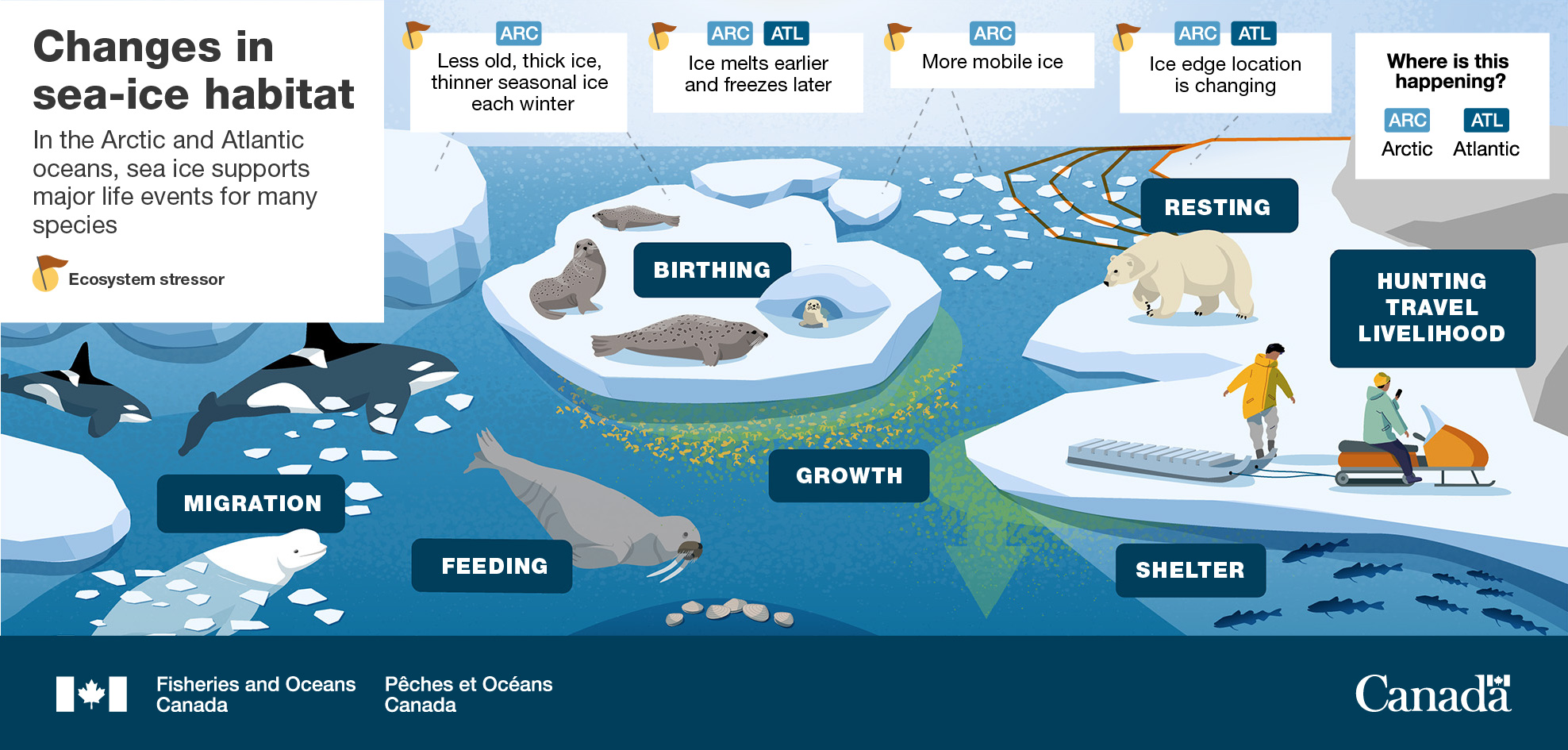Infographic: Changes in sea-ice habitats

Description: Changes in sea-ice habitats
This figure shows a simplified sea ice ocean environment. It shows major life events of species in the Arctic and Atlantic oceans and how they are affected by the many changes in sea ice: presence, timing, and thickness. The top of the graphic shows various red flags alongside text explaining changes At left of the illustration are, two killer whales are swimming towards sea ice, there is also a beluga and between them is the word migration. In the middle of the illustration are seals on a floating piece of sea ice with a baby seal and the word birthing. Underneath the seals underwater is a walrus and clams with the word feeding. Under the floating sea ice is a green phytoplankton bloom, another bloom is beside it closer to shore with an arrow moving downwards into the deep water. Between the two plankton blooms is the word growth. At right of the illustration is land-attached ice with a polar bear at the edge with the word resting. Two Inuit are shown with a snow machine with the worlds hunting, travel, livelihood. On the bottom right of the illustration are fish icons hiding under the land-attached ice with the world shelter.
Text
Changes in sea ice habitat
In the Arctic and Atlantic oceans, sea ice supports major life events for many species
Where is this happening?
Arctic (ARC), Atlantic (ATL)
Less old, thick ice, thinner seasonal ice each winter (ARC)
Ice melts earlier and freezes later (ATL, ARC)
More mobile ice (ARC)
Ice edge location is changing (ATL, ARC)
Migration
Birthing
Feeding
Hunting, travel, livelihood
Growth
Shelter
Resting
Related links
- Date modified: